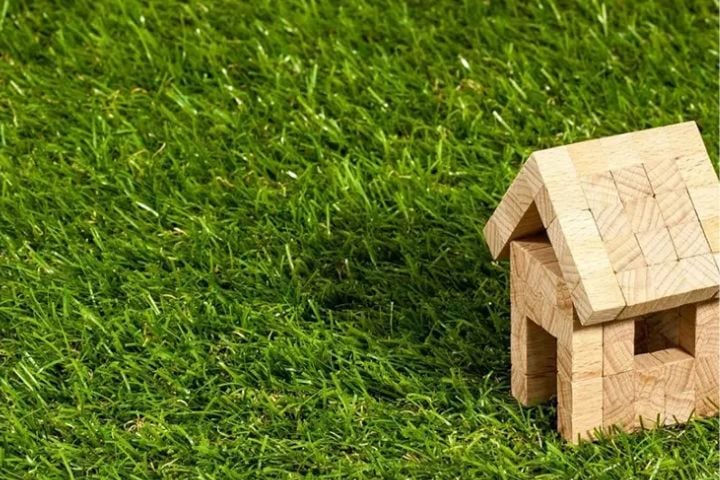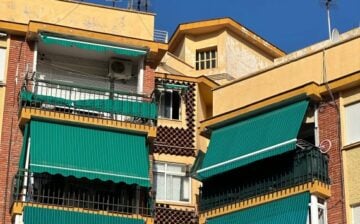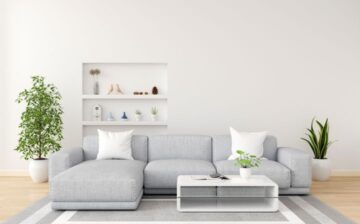
Artificial grass is rapidly taking over the world of landscaping, in both the residential and commercial spaces, and for all the good reasons! Although synthetic, it looks so unbelievably real that the human eye can easily mistake it for natural earth-grown grass.
But that’s just for starters, as artificial grass looks natural and feels like it. And the best part- it doesn’t even need plenty of water, maintenance, or resources to flourish, as is the case with natural turf.
Moreover, it’s cheap, durable, and long-lasting, thus a smart solution to the many challenges associated with maintaining a natural lawn. Many high-quality synthetic turfs are also weather-proof, eco-friendly, and non-toxic, making them completely safe for children, pets, and the environment.
Natural Grass
Due to the many advantages over natural grass, it’s only obvious to see a wide variety of artificial grass coming out in the market. Although it does give you plenty of options to choose from, it may also create a bit of confusion if you’re new to landscaping with artificial grass.
So, to help you sort things out and find the best type of artificial grass for your yard, I have attempted to categorize it based on some simple factors. This includes the material, height, density, use, color, and features.
By considering these attributes alone, you’d be in a far better position to decide which type of artificial grass you should purchase to improve your garden. So let’s get started without any further ado.
1. Material
While “synthetic” doesn’t always mean good, artificial grass isn’t the case, as it is made with high-quality fibers from natural materials such as crushed walnut shells.
The most common types of material used for making artificial grass are nylon, polyethylene, and polypropylene. Let’s take a closer look.
Nylon Artificial grass is the strongest and thus the most expensive type of artificial grass available. It can withstand harsh weather conditions and excessive weight without losing its shape or color.
The only drawback with nylon grass is its lack of natural appearance as it is designed for heavy-duty purposes and has a stiff texture. So, nylon may not be a suitable option for homeowners.
Polyethylene Artificial grass is perhaps the most popular type of synthetic turf used in many areas, including beautiful landscapes, pro and backyard golf courses, sports fields, etc. That’s because it’s soft, light-weight, durable, and looks and feels exactly like natural grass.
Polyethylene is a non-porous material, meaning it does not retain foul odors as nylon does. This makes it easy to manage and occasionally clean to maintain its evergreen lushness.
Polypropylene Artificial grass is the cheapest of them all, but not that durable. Still, many homeowners prefer it over other materials due to limitations in their budget and decorative purposes.
Polypropylene does not have a very high life expectancy. Therefore, it may not be a suitable option in the long run. Moreover, it’s not heat resistant, thus can lose its color or shape upon heat exposure. As a result, it may not be the safest bet if you have children or pets.
So, depending on the material, the best type of artificial grass would be polyethylene made as it is safe, durable, easy to maintain, and almost natural looking.
2. Pile Height
Once you have the right material figured, comes the time to choose the height of the artificial turf. You can pick from three basic sizes- short, medium, and long, based on your taste, requirement, and purpose it serves.
A short-height artificial turf would be less than 30mm and is perfect if you want a freshly edged grass appearance.
Medium size would fall anywhere between 30-38 mm, which is suitable for lawns and front yards.
The longer ones that exceed 37mm look pretty heavy and unnatural and can also flatten due to their weight. So, this one isn’t ideal for small spaces and overall curb appeal.
As you can see, short or medium size artificial grass is what you should be looking for.
3. Pile Density
After the height of the turf, comes another important physical aspect i.e., density.
When it comes to artificial grass, the greater the density, the better its appearance!
While low pile density can make it look uneven and thin, a dense pile would have somewhere between 16,500 to 18,000 stitches per square meter making it look full and stuffed just like grass fill.
You may also want to check the angle or point of view as it will help you find out the desired pile density so it doesn’t look thin or overstuffed.
4. Use
The usage of artificial turf is also an integral part of choosing the type. Different spaces and usages require different strengths and qualities. For instance, a playground, or sports field would require safety. While home lawns and pet yards would need to be non-toxic and so on.
The point is to be mindful of your purpose before making the purchase to improve your home exterior.
5. Color
Another aspect to consider for personal taste, along with pile height and density, is the color.
There are a plethora of options to choose from. From solid grassy green to blue, to many other bright shades to make your surroundings lively, vibrant, and colorful. There’s pink, turquoise, purple, orange, yellow, you name it.
6. Features
The most important factor in choosing the best type of artificial grass for your yard is its features. Modern tech has allowed artificial grass manufacturers to come up with some really neat features.
These include:
- Weather-resistance
- Non-toxic
- Non-flammable
- Non-absorbent
- Anti-microbial
- UV protection
- Urethane coating for durability and resilience
- Anti-stain
- Eco-friendliness & more
Clearly, artificial grass does offer some really cool advantages over natural turf on any given day. Besides, you get the liberty of choosing it as per your requirement and budget.
We hope you found this blog post useful. Be sure to check out our post on 7 Changes That Will Easily Boost Your Outdoor Space for more great tips!
Have Experience in the Moving Industry? Want an Additional Income Stream? Work With All Around Moving!
Partner with us and we’ll help you make money. Click here to learn more.


![How to Deck Up Your Garden like A Pro [Infographic]](https://www.allaroundmoving.com/wp-content/uploads/2024/03/Work-with-AllAroundMovingcom-.jpg)


